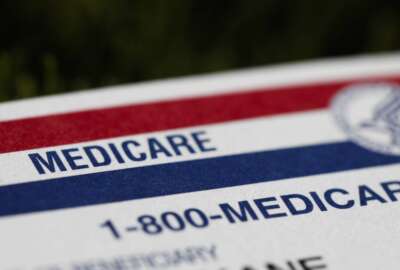Choose wisely: Not all healthcare premiums are increasing
Kevin Moss, Consumers' Checkbook senior editor, explains how federal employees can avoid huge increases in their healthcare costs in fiscal 2025.
Federal employees and annuitants were met with a surprise when the Office of Personnel Management released details about the upcoming Federal Employee Health Benefits (FEHB) open season last month. Health plan premiums will rise by an average of 13.5% next year, marking the largest increase in recent memory. OPM also announced expanded fertility and maternity benefits.
Let’s explore how these changes may affect you in the coming year.
Premium increase
While the average enrollee share of premium is going up, not all plans reflect that trend. For the 144 FEHB plans available in 2024 and 2025, self-only premiums will decrease in 28 plans, stay the same in five plans, increase below the 13.5% average in 69 plans and increase above the average in 42 plans.
Some of the changes are striking. The largest decrease in enrollee share of premium is from Presbyterian Health Plan Standard (PS), available in New Mexico, which is 23% lower in 2025, saving self-only enrollees around $732 next year.
CareFirst BlueChoice Blue Value Plus (B6), available in the D.C. area, will have the same premium next year. The largest percentage increase is from Health Alliance HMO Standard (K8), available in several states, at 66% more in 2025, costing self-only enrollees $2,222 more next year.
This 13.5% average increase marks the largest in the last two decades. Just three years ago, the average enrollee share went up only 3.8%. It’s unclear whether 2025 will be an outlier or a trend, but federal employees and annuitants should prepare to pay more going forward and anticipate large premium increases in the future.
How to combat higher premiums
First, your plan choice matters. Only about 5% of federal employees and annuitants switch coverage each year, with many staying in the same plan for years. However, not all premiums are rising at the same rate. If you haven’t explored more affordable options lately, this Open Season is a great opportunity to do some research and see if there’s a less expensive plan that offers similar provider access and benefits to your current plan.
If you’re an active federal employee, consider taking advantage of a flexible spending account (FSA). Your healthcare costs go beyond just your health plan premium—out-of-pocket medical, dental and vision expenses can add up. By using an FSA, you can save about 30% on these costs through pre-tax contributions. While FSAFEDS, which manages the federal FSA program, faced fraud issues earlier this year and temporarily paused new enrollments, new anti-fraud and security measures were implemented and enrollments resumed in August. Currently, only about 20% of federal employees use an FSA, meaning many are missing out on guaranteed savings for their healthcare expenses. The FSA Open Season aligns with the FEHB Open Season, running from Nov. 11 through Dec. 9.
Fertility benefits
Starting this year, all FEHB plans provided access to all methods of artificial insemination and the fertility drugs associated with in vitro fertilization (IVF) (up to three cycles annually). Additionally, one national preferred provider organization (PPO) plan, BCBS Standard, offered a $25,000 annual benefit to cover the cost of IVF procedures, and the cost of fertility drugs did not count toward the $25,000 limit.
Next year, federal employees seeking IVF coverage will have an additional nationwide plan to choose from: GEHA High. Alongside these options, several local plans will expand their benefits to include IVF coverage in 2025: in the D.C. area, CareFirst plans, Sentara Health (Northern Virginia), and MDIPA; in Colorado, Kaiser plans; in New York, Independent Health plans; and in California, Western Health and Sharp.
Despite expanded coverage for IVF, families using these services will still face significant out-of-pocket costs. A single IVF cycle can range from $15,000 to $30,000, and coinsurance—the portion the plan member must pay— depending on the plan, varies between 15% and 50% of the procedure’s total cost. This means families could be responsible for thousands of dollars in out-of-pocket expenses. Those planning to use IVF benefits should consider taking advantage of an FSA, which allows contributions of up to $3,200 in 2024, to help offset these costs.
Maternal health
There will be expanded maternal health benefits for plan year 2025. All of the FEHB plans will cover mental health treatment for postpartum depression, 80% of plans will cover certified nurse midwives, 67% will cover delivery at birthing centers, 72% will cover nurse home visits, and 47% will cover doulas. To learn more about maternal benefits, go to Section 5(a) of the official FEHB plan brochure.
Keep submitting your FEHB questions! We’ll include answers, like the one below, in future columns.
Question: I am a retired federal employee (non-postal service retiree) with an American Postal Workers Unions (APWU) health plan under FEHB. I know I do not qualify for the new postal service health plans, but do you know if the APWU health plan will still be available under the FEHB for 2025?
Postal union plans offered by APWU, National Association of Letter Carriers (NALC) and Mail Handlers Benefit Plan (MHBP) are available to non-postal employees and annuitants who become associate members, which happens during enrollment by paying annual membership fees.
APWU offers two plans, a consumer-driven health plan (CDHP) and High, and associate members pay $35/year in membership fees.
NALC offers two plans, CDHP and High, and associate members pay $36/year in membership fees.
MHBP offers three plans, consumer option, standard option and value plan, and associate members pay $52/year in membership fees.
Kevin Moss is a senior editor with Consumers’ Checkbook. Watch more of his free advice and check if the Guide to Health Plans for Federal Employees is available for free from your agency. You can also purchase the Guide and save 20% with promo code FEDNEWS.
Copyright © 2025 Federal News Network. All rights reserved. This website is not intended for users located within the European Economic Area.






